10 Die Die Must Try Food in Malaysia
Malaysian cuisine is one of the most unique cuisines in the world due to the fact that it’s a melting pot between various cultures. Every tourists that visit Malaysia would always end up loving the food. There are many unique Malaysian foods so here we have condensed it into 10 food that you have to try when you’re going to Malaysia.
Nasi lemak
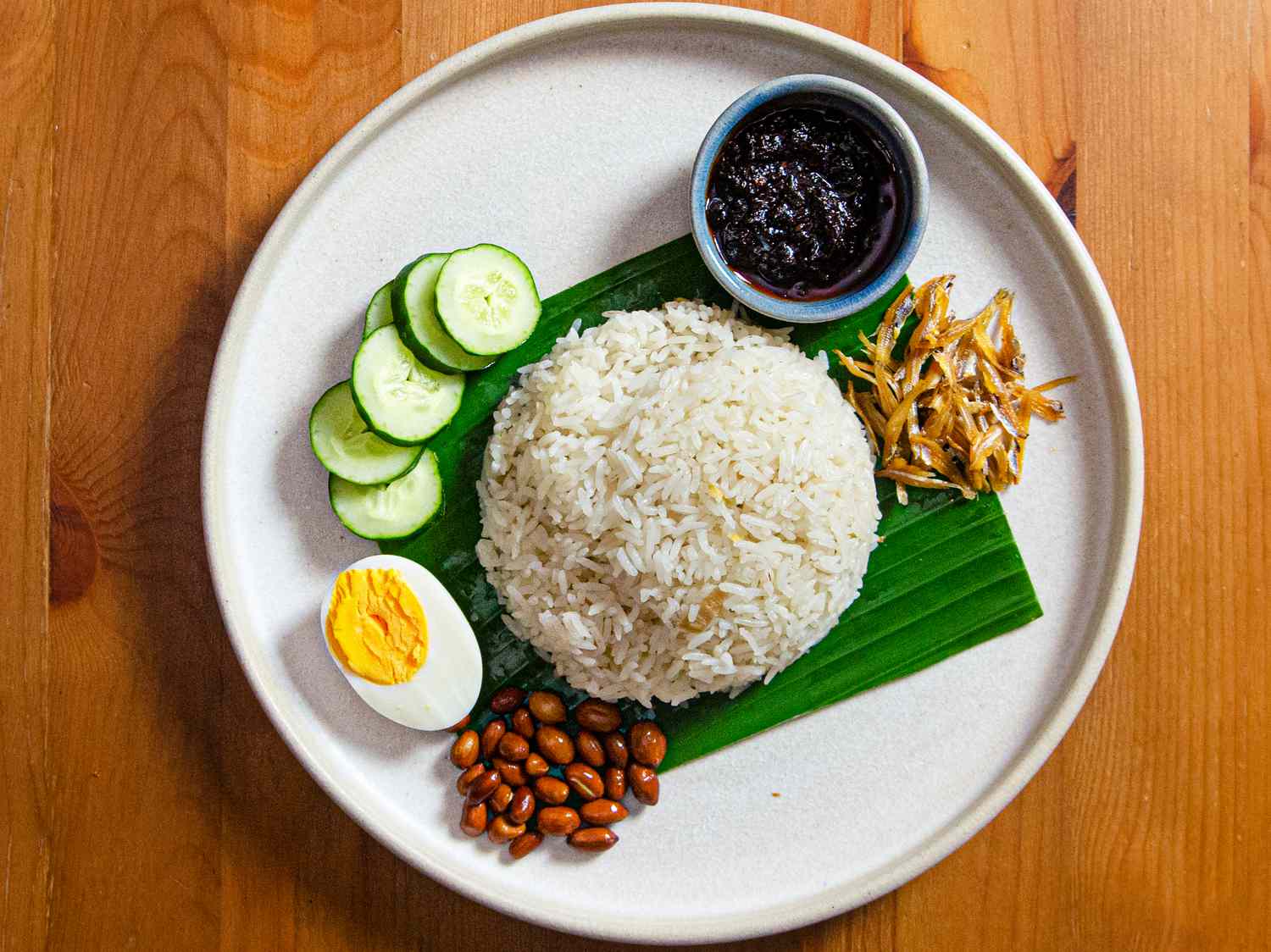
Nasi lemak is commonly hailed as Malaysia’s unofficial national dish.
In essence, it is rice cooked in coconut milk. However, what truly distinguishes it are the accompanying elements.
Depending on your location in Malaysia, it may be served with an array of sides such as hard-boiled eggs, peanuts, vegetables, curry with lamb, chicken, or beef, seafood, and sambal (a chili-based sauce).
While traditionally a breakfast dish, nasi lemak has transcended its morning origins, becoming a popular choice for people to order at any time of the day.
Nasi kerabu
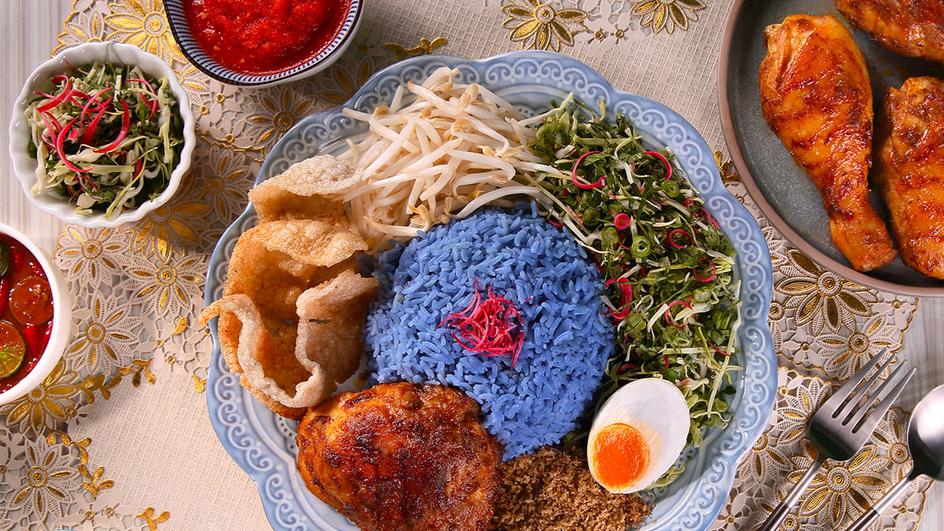
If the vibrant blue hue of the rice doesn’t pique your interest, the queues of eager customers across the country lining up for this beloved Kelantanese dish certainly will.
Originating from the northern peninsular state of Kelantan in Malaysia, nasi kerabu owes its striking color to telang flowers, crushed and blended into the flour. The aquamarine rice is adorned with bean sprouts and fried coconut, generously soaked in piquant budu, a fermented fish sauce. In keeping with the authentic Kelantanese tradition, you embrace the tactile experience and use your hands to relish this flavorful dish.
Mee goreng mamak
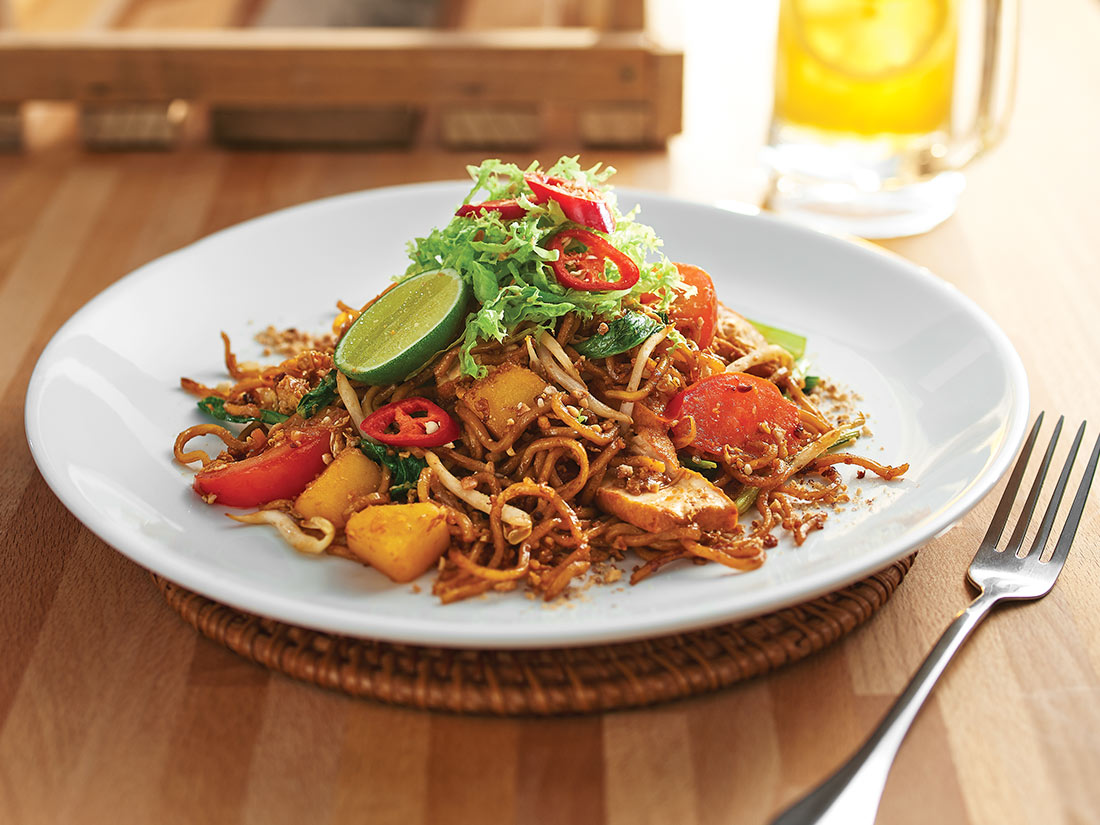
This all-encompassing Indian Muslim delicacy comprises yellow noodles, a choice of beef or chicken, shrimp, soy sauce, vegetables, and eggs, with a touch of chili for an enticing kick. While attempting to recreate this dish at home may seem straightforward, regrettably, the flavor won’t quite match the memorable experience of savoring it at that authentic Malaysian street food stall.
Ayam percik
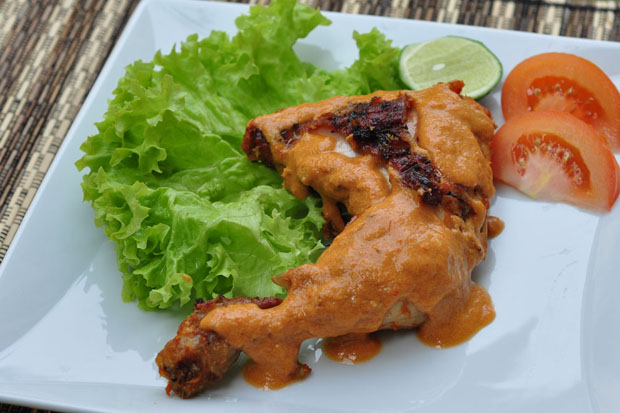
The dominance of KFC in the region, and throughout Asia, comes as no shock to those acquainted with ayam percik. Essentially, it involves grilled chicken coated in a fiery blend of chili, garlic, and ginger sauce combined with coconut milk. When adorned with the perfect dose of percik sauce, this quintessential Malaysian street food surpasses anything Colonel Sanders can offer in terms of zest.
Rendang (beef, chicken or lamb)
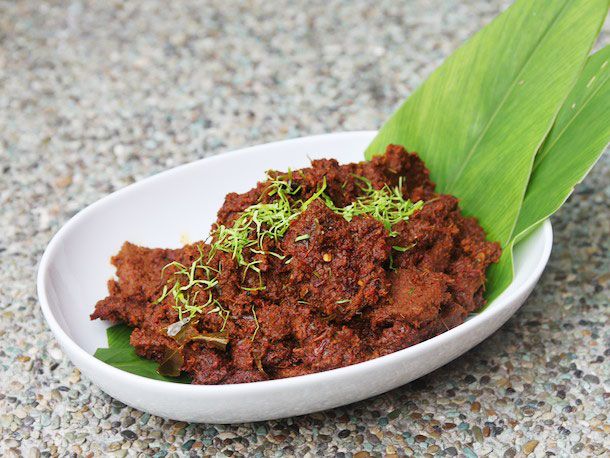
While occasionally mislabeled as a curry, devoted Malaysian food enthusiasts emphasize that this hearty concoction of coconut milk and spices bears little resemblance to traditional curry.
The distinction lies in its preparation: a slow simmering process, allowing the meat to absorb the rich blend of spices until the rosy liquid is entirely evaporated. Rendang, a beloved dish, particularly during festive occasions, can be savored throughout Malaysia.
Kuih
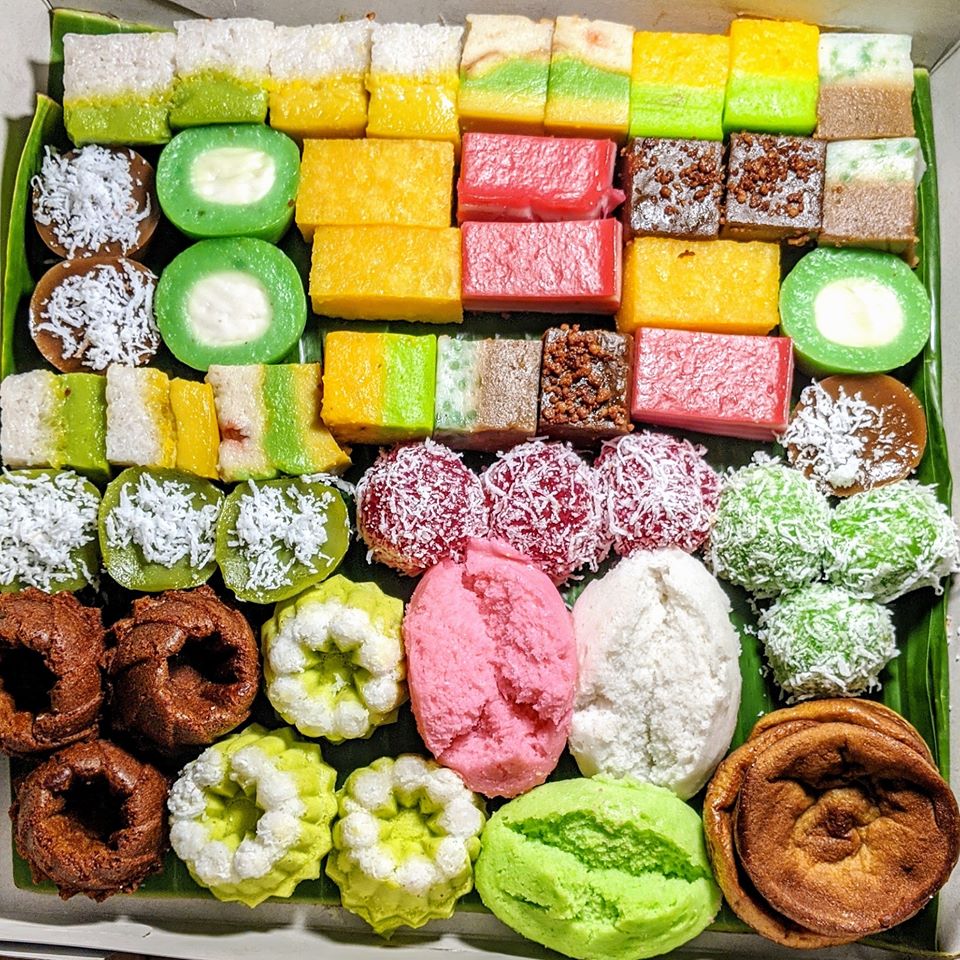
Diversity is the key to delving into kuih, the Malay-style pastries. Bite sized for a quick indulgence and sweet enough to provide a mild thrill, kuih stalls stand out as the most vibrant and colorful in the market.
This assortment of tender, sweet treats disappears rapidly – with only a handful left as daylight starts to wane.
Laksa
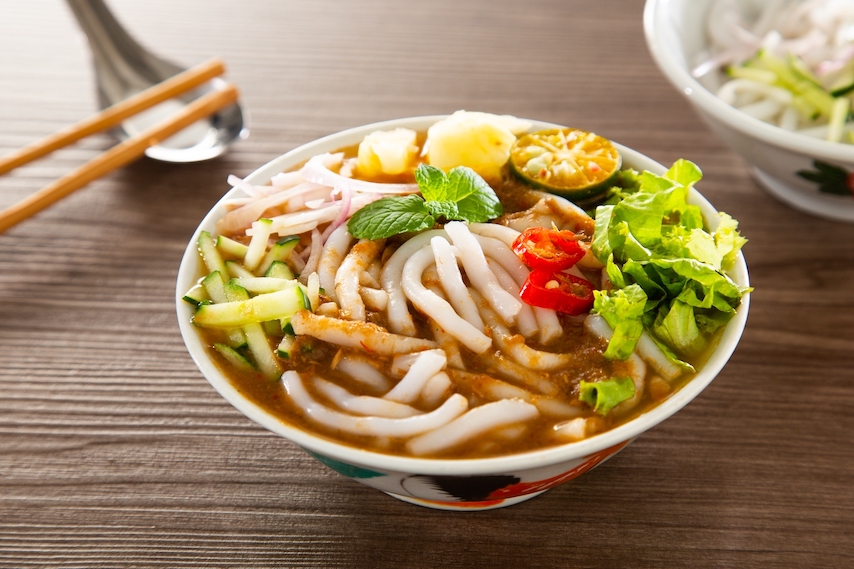
An integral part of Malaysian culinary culture, laksa establishments have ventured beyond borders, setting up shop in places like Bangkok, Shanghai, and beyond.
The dish comes in numerous iterations. For those who savor the fiery experience, the curry version of this spicy noodle soup is sure to satisfy.
Preferences vary, with some opting for a fish-based broth while others favor prawns.
Our top choice is Penang’s asam laksa, where tamarind plays a prominent role (“asam” being Malay for tamarind), resulting in a zesty and tangy fish broth.
Asam pedas
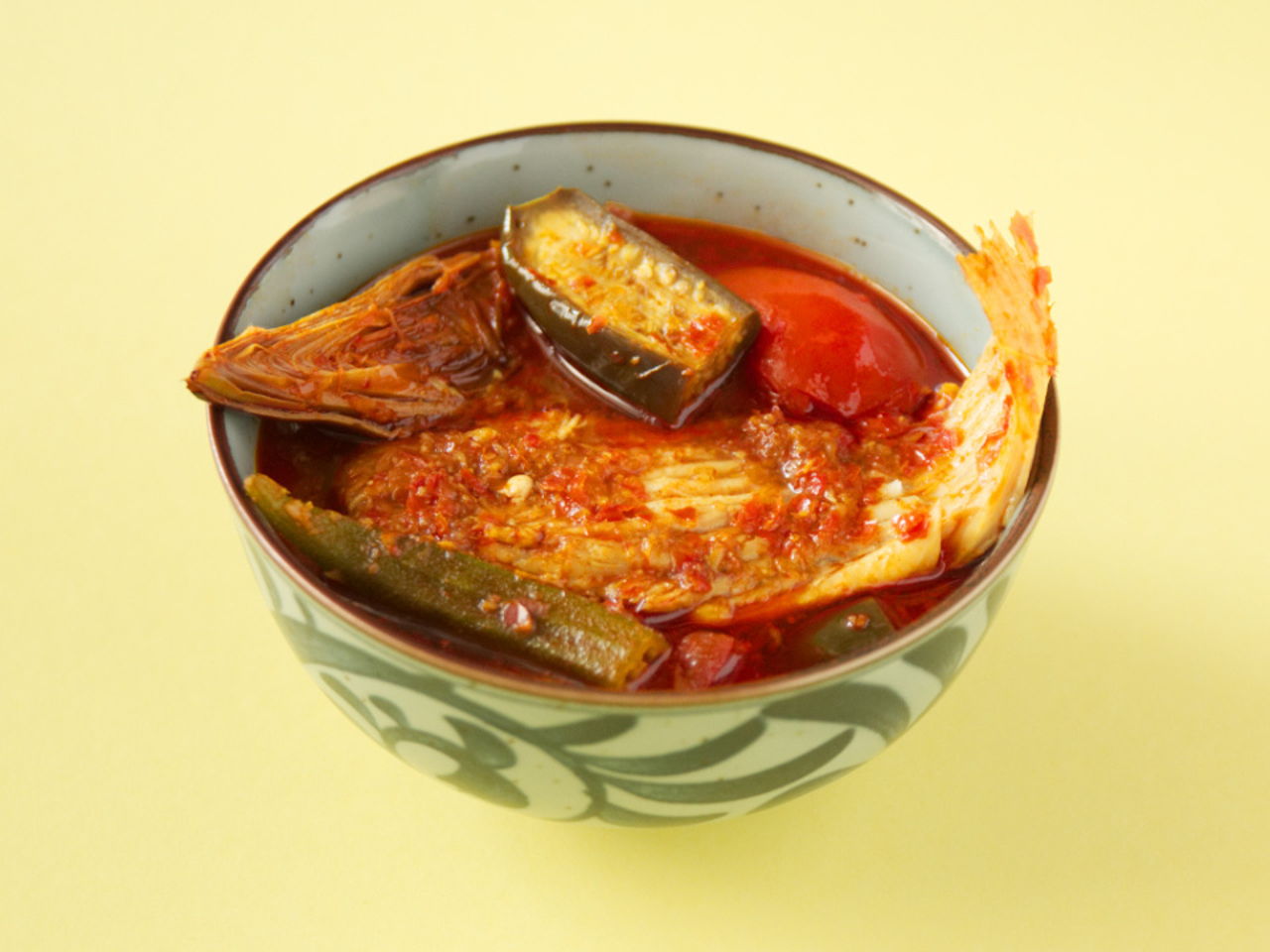
It would be remiss not to feature asam pedas on any concise compilation of the nation’s finest culinary offerings.
This fish curry, widely enjoyed across peninsular Malaysia, is typically crafted with freshwater fish or stingray.
The term “asam,” signifying tamarind, plays a prominent role in this dish, complemented by ginger, shrimp paste, garlic, chilies, and an assortment of other herbs.
Otak-otak
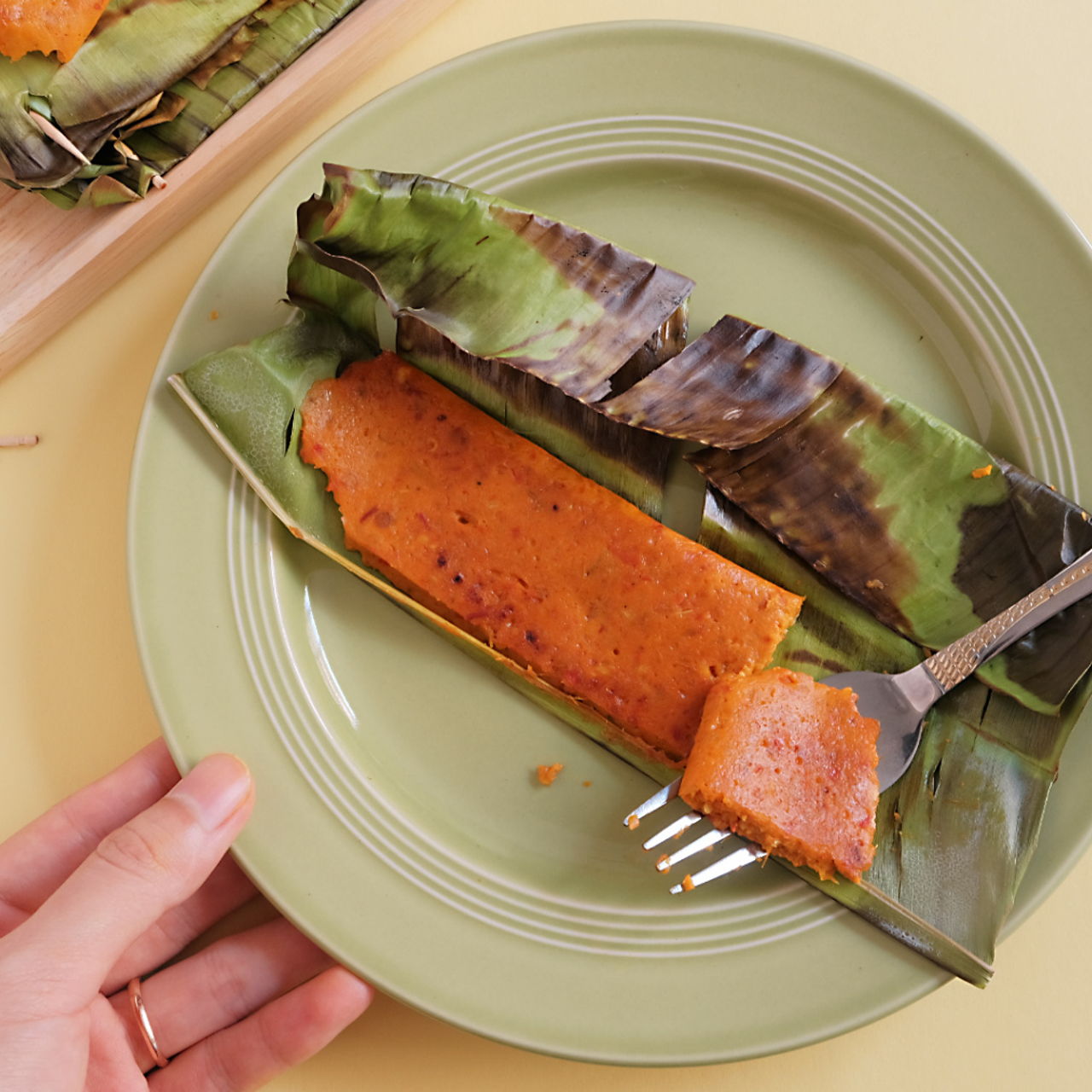
Otak-otak, though translating to “brains” in Malay, earns its graphic name from its appearance, not its flavor or components.
This blend of fish paste, spices, and diced onions is delicately encased in a banana leaf and grilled over charcoal until the pinkish contents reach a warm temperature and the leaves acquire a slight char.
There’s no need for elaborate dining etiquette – the straightforward approach involves picking at it directly from the leaf.
Char kuey teow
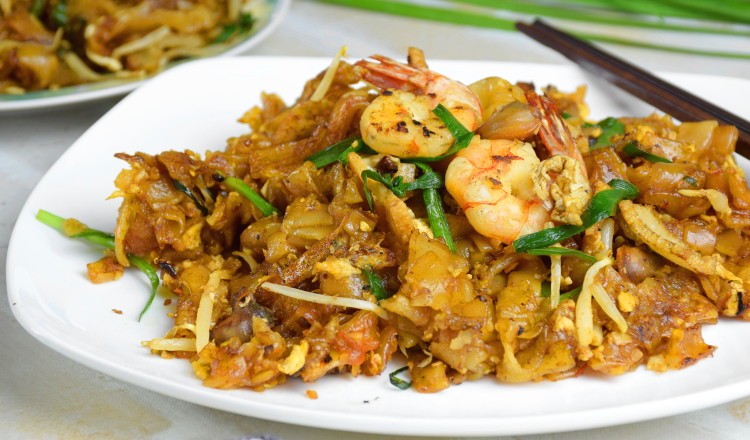
Yet another culinary gem attributed to Chinese migrants, char kuey teo —crafted with flat rice noodles stands out as one of Southeast Asia’s most beloved noodle dishes.
The noodles are stir-fried with pork lard, a blend of dark and light soy sauce, chili, de-shelled cockles, bean sprouts, Chinese chives, and occasionally prawn and egg. Crucial to the dish is the presence of “wok hei” or the breath of the wok, embodying the distinct qualities and flavors imparted by cooking in a wok at high heat.
10 Must See Places in Jakarta
Cityhall Yangon top 10 things must see places in Yangon
Recent Posts
-
4 Telcos You Should Use in Malaysia
-
10 Die Die Must Try Food in Malaysia
-
10 Beautiful Mountains to Climb in Malaysia
-
10 Best places Singaporeans like to visit in Malaysia
-
Top 10 Best Resorts and Diving Sites in Malaysia
-
10 Malaysian Restaurants Listed in Michelin Guide
-
5 Budget-Friendly Co-Working Havens in Kuala Lumpur!
-
Malaysian Marvels: 18 Must-Go Places That Will Have You ROFL-ing Across the Peninsula!
-
Malaysian Beaches: Where the Sand is Soft, and the Laughter is Contagious!
-
Kuala Lumpur: 10 Must-Go Places That Will Have You LOL-ing All the Way!















